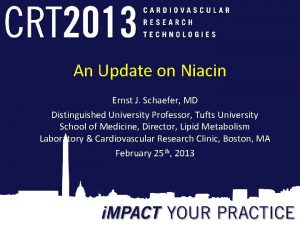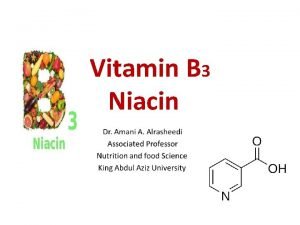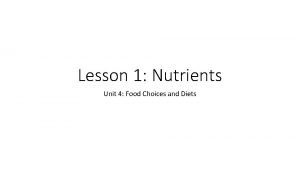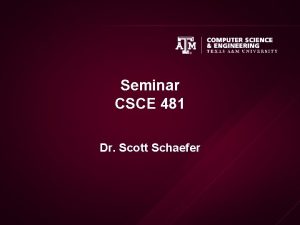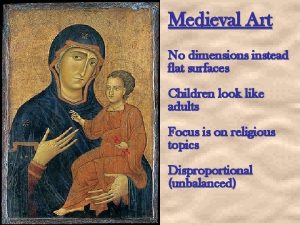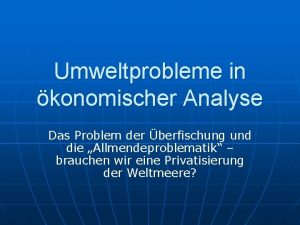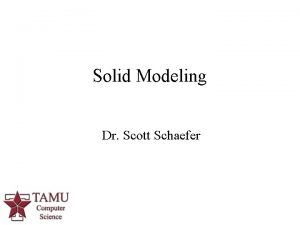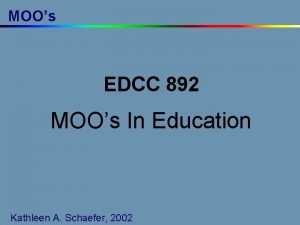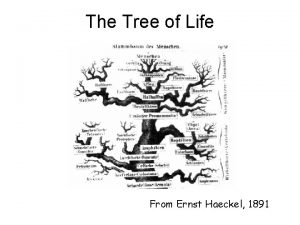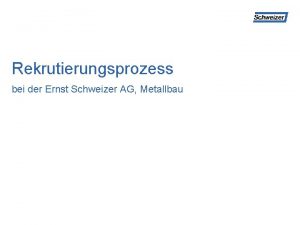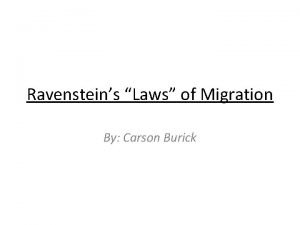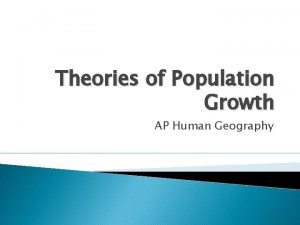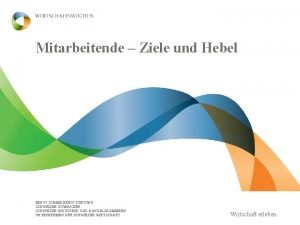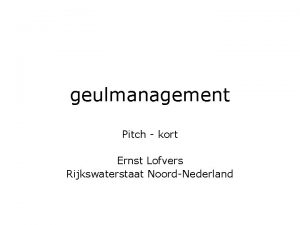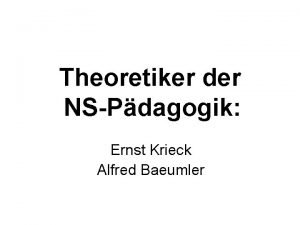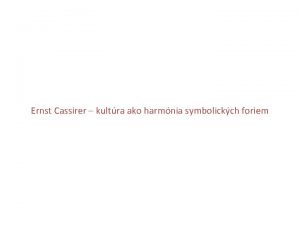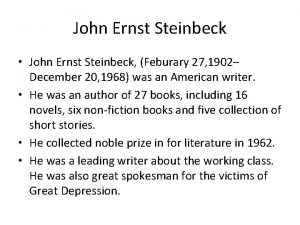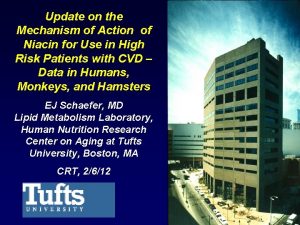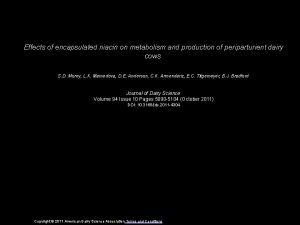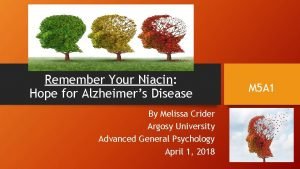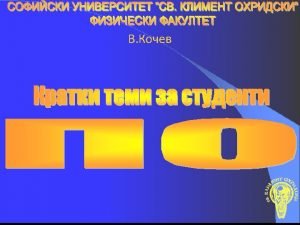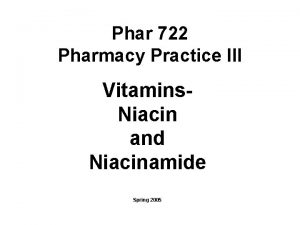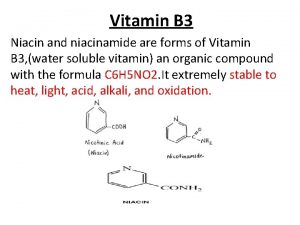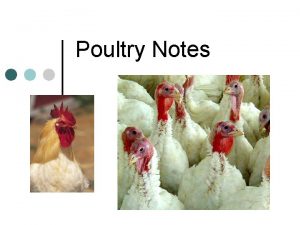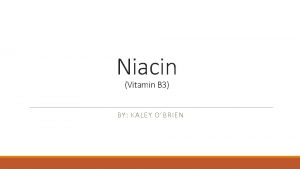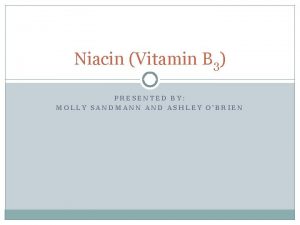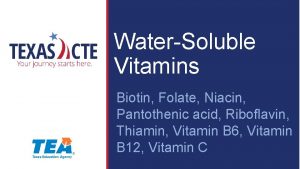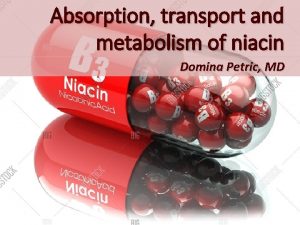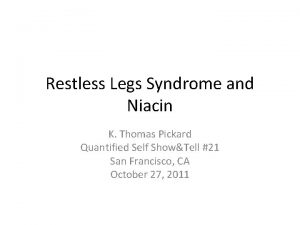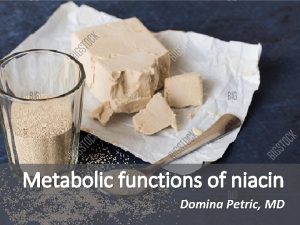An Update on Niacin Ernst J Schaefer MD
























- Slides: 24

An Update on Niacin Ernst J. Schaefer, MD Distinguished University Professor, Tufts University School of Medicine, Director, Lipid Metabolism Laboratory & Cardiovascular Research Clinic, Boston, MA February 25 th, 2013

Ernst J. Schaefer, MD Consulting: Merck and Company, Inc. Grant Support: Abbott Laboratories and Du. Pont Honoraria: Arisaph Pharmaceuticals Stocks, Stock Options, other ownership interest: Boston Heart Laboratory

An Update on Niacin Ernst J. Schaefer, MD Distinguished University Professor Director, Lipid Metabolism Laboratory, Human Nutrition Research Center on Aging at Tufts University &Tufts University School of Medicine, Boston, MA USA Washington DC, February 25 th, 2013

Rudolph Altschul (1901 -1963): Niacin Arch Biochem 1955; 54: 558 -9.

Niacin n n “Niacin is the only available agent that significantly increases HDL-C concentrations” 1. “Among lipid-lowering agents, niacin is the most effective “HDL-raising drug” and effectively modifies all of the lipoprotein abnormalities associated with atherogenic dyslipidemia” 2. 1 Genest J, Frohlich J, Fodor G, Mc. Pherson R. CMAJ 2003; 168(9): 921 -4, 2 Expert Panel on Detection, Evaluation, and Treatment of High Blood Cholesterol in Adults, NIH 2002.

Niacin – Mechanisms of Action Ø Niacin is an effective TG lowering agent, especially in those with elevated TG levels Ø Decreases FFA flux, decreases TG production in the liver, and also enhances the clearance of TRL apo. B-48 and apo. B-100. Ø Increases ABCA 1 and ABCG 1 gene expression in cell and animal studies, and increases very large protective alpha-1 HDL in animal and human studies. Ø Increase adiponectin gene expression and plasma levels.

Human Apolipoprotein (Apo) Metabolism Synthetic Sites FFA Chylomicron Apo. B-48 other Apos Lipids kg M TP g/ m 2 Intestine 3 +24% Liver 20 2 M TP m g/ Chylomicron Remnant Apo. B-48, Apo. E Lipids 4 Ap L o ip A-I lipo ids p C , Tra -I, C A-II, rote ns -II, A-I ins fer C- V Pro III, E tei ns 12 mg/kg/d /d 1 LPL, HL, LCAT kg /d VLDL Apo. B-100 other Apos Lipids Catabolic Sites 5 hours, +48% HL s ay. 5 d HDL Apo. A-I other Apos Lipids Kidney Scavenger Cells LC AT 12 mg//kg/d 4 hours 8 4 s in E s e d t , s pi pro -III tein i L o , C o lip -II r Pr o C Ap -I, sfe C an Tr LPL, HL, 5 LCAT Liver 6 FFA , +46% LDL Apo. B-100 Lipids 9 3. 5 days Peripheral Cells 7 Cohn JS et al J Clin Invest 1990: 85: 804, Lamon-Fava S et al ATVB 2008; 28: 1672 -8.

Niaspan: Combined Data from Pivotal Placebo-Controlled Studies 30 HDL-C 20 Change from Baseline 10 0 -10 10% -3% -5% 16% -8% -12% -14% -20 21% -13% LDL-C -25% Lp(a) -32% -40 -50 -16% -17% -21% -30 24% 500 mg 1000 mg 1500 mg 2000 mg TG * p<0. 01

Niacin and Cardiovascular Protection: Secondary Prevention Studies Study Treatment(s) Coronary Drug Project (CDP)1, -4 Nicotinic acid vs placebo Stockholm Ischemic Heart Disease Study (IHD)5 Nicotinic acid + clofibrate HDL Atherosclerosis Treatment Study (HATS)6 Nicotinic acid + simvastatin ± antioxidants vitamins vs placebo Duration (years) Results 5 Non-fatal MI � 27% Stroke/TIA � 24% 15 5 3 Total mortality � 11% Total mortality � 26% CHD mortality � 36% CHD mortality, non-fatal MI or revascularization procedure – � 60%-90% 1. CDP Research Group. JAMA. 1975; 231: 360 (n=1119 in the niacin group) , 2. Canner PL et all J Am Coll Cardiol. 1986; 8: 1245, 3. Canner PL et al Am J Cardiol 2005; 95: 254 -257, 4. Canner PL et al Am J Cardiol 2006; 97: 477 -479. , 5. Carlson LA, Rosenhamer G. Acta Med Scand. 1988; 223: 405 , 6. Brown BG et al. New Engl J Med. 2001; 345: 1583 (n=160 total, 80 got niacin plus simvastatin with or without antioxidants).

Coronary Drug Project: Effect of Niacin in Post-MI Patients Cumulative Rate of Nonfatal MI in Post-MI Patients Treated With Niacin or Placebo Cumulative Event Rate (%) 15 Recurrent nonfatal MI Placebo Niacin 10 27% 5 (P < 0. 004) 0 12 34 36 48 60 Months of Follow-up Patients receiving niacin (n=1119) vs patients receiving placebo (n=2789). Total mortality was similar between the 2 groups at 5 years. The Coronary Drug Project Research Group. JAMA. 1975; 231: 360 -381.

Apo. A-I-Containing HDL Subpopulation Profiles of a Control and a CHD Patient (b) – Lack of Large HDL in CHD pre [nm] 17. 0 9. 51 8. 16 7. 10 4. 66 Asztalos et al. Arterioscler Thromb Vasc Biol. 2003; 23: 847 -852; 2004; 24: 2181 -2187, 2005; 25: 2185 -2191, HATS Trial, Framingham Offspring Study, and the Veterans Affairs HDL Intervention Trial

Differences in HDL Particles in Male CHD Cases vs Controls in the Framingham Offspring Study Apo A-I Concentration Controls (n=1277) 17 mg/dl % Difference Cases (n=169) - 39%* (16% of total) 40 mg/dl - 9% (37% of total) 38 mg/dl + 29%* (36% of total) 12 mg/dl + 16%* (11% of total) “For each 1 mg/dl apo. A-I increase in alpha 1 HDL - 26% reduction in CHD risk BF et al. Arterioscler Thromb Vasc Biol 2004; 24: 2181 -2187. Asztalos

Effects of Simvastatin/Niacin on HDL Particles in CHD Cases in HATS (n=123) Apo A-I Concentration Difference 9 mg/dl % + 115%* 30 mg/dl + 27% 45 mg/dl - 17%* 15 mg/dl - 39%* “The increase in apo. A-I in large alpha 1 HDL was significantly related (p<0. 01) to lack of progression or regression of coronary artery stenosis. ” Asztalos BF, Batista M, Horvath KV, Cox CE, Dallal GE, Morse JS, Brown GB, Schaefer EJ. Arterioscler Thromb Vasc Biol 2003; 23: 847 -852.

AIM HIGH -1 (Atherothrombosis Intervention in Metabolic Syndrome with Low HDL/ Hi TG and Impact on Global Health Outcomes) > 3414 vascular disease patients on simvastatin or simvastatin/ezetimibe received niacin (1718) or placebo (1696). > The trial was stopped after a mean follow-up period of 3 years owing to a lack of efficacy. At 2 years vs. baseline, niacin therapy had significantly: - increased HDL-C by 20% from 35 mg/d. L to 42 mg/dl - lowered TG levels by 26% from 164 mg/d. L to 122 mg/d. L - lowered LDL-C by 16% from 74 mg/d. L to 62 mg/dl. > However the primary end point occurred in 282 patients in the niacin group (16. 4%) and in 274 patients in the placebo group (16. 2%) (hazard ratio, 1. 02, P=0. 79 by the log-rank test).

AIM HIGH -2 (Atherothrombosis Intervention in Metabolic Syndrome with Low HDL/ Hi TG and Impact on Global Health Outcomes) Ø Each placebo capsule contained 50 mg of niacin, so subjects on placebo received up to 200 mg/day of niacin. Ø In order to control for LDL-C levels, 22% of subjects in the placebo group and 10% in the niacin group were on ezetimibe 10 mg/day. Ø LDL-C and HDL-C were 68 and 38 mg/dl on trial in the control group and 63 (-7%) and 42 (+9%) mg/dl in the treatment group on trial. Ø The study was powered to see a 25% risk reduction in the primary endpoint. Boden W et al N Engl J Med. 2011; 365: 2255 -67.

AIM HIGH – Why Did the Study Fail? All of the Below May Have Contributed. Ø The study was underpowered. Ø The study was stopped too early. Ø The placebo group got low dose niacin which may have had an effect, and also had beneficial changes relative to baseline. Ø Twice as many patients in the placebo group received ezetimibe as compared to the treatment group. Ø Mean LDL-C at 63 mg/d. L was only 7% lower in the treatment group than in the placebo group. Raising HDL-C when LDL-C is < 70 mg/d. L may not be effective in CHD risk reduction. Ø Mean HDL-C at 42 mg/d. L was only 9% higher in the treatment group than in the placebo group.

AIM HIGH – Subgroup Analysis Ø Post-hoc subgroup analysis of AIM-HIGH Ø CHD subjects with TG > 200 mg/d. L and HDL-C < 32 mg/d. L Ø This group had the highest risk of recurrent CHD events in the placebo group (statin alone or statin plus ezetimibe) Ø Moreover in this subgroup those who received niacin had a relative risk of 0. 63 (p=0. 017) versus placebo group. Guyton J et al AHA November 7 th, 2012

Fibrates – Subgroup Analysis Ø In ACCORD Lipid – overall event rate was 11. 3% in the simvastatin monotherapy group and 10. 5% in the simvastatin/ fenofibrate group (p=0. 32). Ø In the subgroup with TG > 200 mg/d. L and HDL-C < 35 mg/d. L event rate was 17. 3% (+53%) in the simvastatin monotherapy group and 12. 4% (-28%) in the simvastatin/ fenofibrate group (p=0. 03). Ø Similar observations in BIP and FIELD Ginsberg HN et al New Engl J Med 2010; 362: 1563 -9

HPS 2 -THRIVE: Heart Protection Study 2: Treatment of HDL to Reduce the Incidence of Vascular Events Ø Presented by Prof. Jane Armitage, Oxford, PI, ESC/ 9/2012 Ø 25, 673 high-risk patients with occlusive arterial disease from China, Scandinavia and UK randomized into study Ø Randomized blinded comparison: ER niacin/ laropiprant (ERN/LRPT) 2 g daily versus placebo Ø Primary end point: Major vascular events after median follow -up of 4 years Ø Pre-specified safety analyses: Median follow-up of 3. 4 years (to January 2012) Ø Background LDL-lowering therapy with: Simvastatin 40 mg (+/- ezetimibe 10 mg) daily

HPS 2 -THRIVE Lipid levels by Region: Effect of 8 Weeks ERN/LRPT during Pre-randomization Run-in LDL-C (mg/d. L) n Baseline Change % Change China 10932 59 -12. 4 Europe 14741 68 -14. 0 All 25673 64 -13. 2 -20%* HDL-C (mg/d. L) China 10932 41. 2 +5. 8 Europe 14741 46. 2 +7. 8 All 25673 44. 3 +7. 0 +17%*

HPS 2 -THRIVE Summary HPS 2 -THRIVE • Largest ever randomized trial of effects of ER niacin on safety and CV events in diverse high-risk patients – no significant benefit reported in press 2012. • Among those tolerating ERN/LRPT for 8 weeks, 76% remained compliant with active treatment after 3 years vs 85% on placebo • ERN/LRPT increases risk of myopathy among patients on statin therapy, particularly in the Chinese • No clear adverse effects of ERN/LRPT on liver, but known niacin side-effects on skin & GI confirmed • Effects of 4 years of ERN/LRPT on vascular events in HPS 2 -THRIVE - full data to be presented at ACC 3/9/13

Potential Adverse Effects of Laropiprant Ø The effects of niacin on lipids are independent of GPR 109 A, but not the flushing effects, which are due to cyclooxygenase (COX)-1 mediated production of prostaglandin (PG) D 2, followed by the COX-2 mediated production of PGE 2 (1). Ø PGD 2 acts by binding to the prostanoid receptors DP 1 and DP 2. Laropiprant decreases the flushing induced by niacin by inhibiting the DP 1 receptor. Ø DP 1 depletion in mice leads to increased atherosclerosis, thrombosis, aneurysm formation, and hypertensive response to angiotensinogen II (2). Ø Niacin inhibits atherosclerosis in mice via GPR 109 A by inducing ABCG 1 dependent macrophage cholesterol efflux, and by inhibiting MIP-1 dependent macrophage recruitment (1). Ø Laropiprant, like COX-2 inhibitors, may cause increased CVD risk. Low dose aspirin might be a far better alternative to lower flushing (2). (1) Lukasova M et al J Clin Invest 2010; 121: 1163 -73. (2) Song WL et al. J Clin Invest 2012; 122: 1459 -68.

Niacin Score Card + Ø Coronary Drug Project Ø Stockholm Ischemic Heart Disease Study + Ø HATS, Other Angiographic Studies + Ø AIM HIGH – except subgroup TG > 200 mg/d. L and HDL-C < 32 mg/d. L -37% RR Ø HPS 2 -THRIVE – subgroup analysis? Ø More data from Dr. Armitage at ACC 3/9/13 Late Breaking Trials Niacin

Thank you for your attention
 Ernst schaefer md
Ernst schaefer md Niacin absorption
Niacin absorption Function of niacin
Function of niacin ........ is an alternative of log based recovery.
........ is an alternative of log based recovery. Csce 481 tamu
Csce 481 tamu Da vinci architect
Da vinci architect Moos and schaefer 1984 crisis theory
Moos and schaefer 1984 crisis theory Gordon schäfer modell
Gordon schäfer modell Rolf schaefer kanzlei für arbeitsrecht hannover
Rolf schaefer kanzlei für arbeitsrecht hannover Schaefer model
Schaefer model Scott schaefer tamu
Scott schaefer tamu Beistrichsetzung
Beistrichsetzung Moo
Moo Max ernst forest and dove
Max ernst forest and dove Frotáž umělci
Frotáž umělci Ernst haeckel tree
Ernst haeckel tree Max ernst le rossignol chinois
Max ernst le rossignol chinois Ernst and young tax services
Ernst and young tax services Ernst schweizer
Ernst schweizer Ernst and young moldova
Ernst and young moldova Ernst and young client portal
Ernst and young client portal Ravenstein’s laws of migration definition
Ravenstein’s laws of migration definition Population distribution
Population distribution Ernst schmidheiny
Ernst schmidheiny Salute cartoon
Salute cartoon
